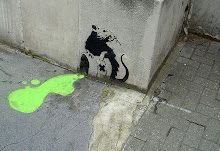A few new techniques have popped up that are illuminating the food web a little more clearly.
The first caught my ear through the Science Friday weekly video. Two NYC high schoolers, Brenda Tan and Matt Cost, took samples of a number of food items (as well as some amusing non-food specimens) sequenced thw COI gene in the mitochondrial DNA, and checked the 'barcodes.' This method is fairly robust, because using mitochondria you can type from hair and other non-cellular samples, and "even sequences as short as 20 nucleotides could be used to match to just one of the tens of thousands of species in the database."
The project is billed as this general interest science piece, but it has implications for the target demographic of this blog in a few ways, mainly relating to proper labeling. In this project and in a previous project done by the same mentor, many mislabeled products. A few were engangered species, including Sebastes fasciatus, or the Acadian redfish. Though the main trend was to 'downpour' and sell cheaper, more common species in place of rarer and more expensive ones. Even so there is an impact on the environment. Depending on who is doing the mislabeling, as it could be the original fisherman or harvester, this would be skewing much of the data being collected on sustainable wild harvesting of many foods. As this technology becomes more readily available it will be easier to have more accurate and less obfuscated information at the disposal of conversation groups and so forth.
Another point of interest I saw in this project was that this approach can easily be used by vegans in more focused truth-in-labeling tests, similar to those mentioned previously here. And in fact, would be cheaper and more accurate than the specific tests performed in that instance. I think I shall email those folks and see if they are game for it. They clearly have better funding than I.
The second item in my foodweb amalgam post is concerning a technique used to tell diet of an animal (or person) from samples of bone collagen and hair keratin, using ratios of radioactive carbon and nitrogen isotopes present. The study comes via the recently-moved NCBI-ROFL, and is a test on the extent of the infamous Maneaters of Tsavo horrible diet. The study seems like a proof-of-concept of the technique on a flashy general-interest subject to drum up support (nothing wrong with that). I can also see this technique being used to clear up some things of interest to us folk. Were primitive humans mainly meat-eaters? Was Hitler a vegetarian? And for the vegetarians, it could perhaps verify if the milk and eggs are from animals that were not fed other animals.
24 January 2010
If we Find out What we Eat, Do we Find out What we are?
Labels:
Acadian Redfish,
diet,
experiment,
fiood web,
food,
food chain,
ingredients,
labelling,
labels,
lions,
Maneaters of Tsavo,
Sebastes fasciatus
23 January 2010
French Stop Testing Oysters on Mice

Yes, you read that right. I heard this first on the radio, but there are better text versions here in English and here en français.
The gist is that since oysters are filter-feeders in the big wide ocean, and not raised in a closed system of a farm, and they can pick up pathogens pretty easy. So there are naturally food-safety concerns (ignoring the heavy metals and toxins). So many governments started testing digestive fluid from the oysters by injecting it into mice and seeing if they died (the mouse bioassay, or test de la souris). Very base test. Fast forward a few decades, and most governments find faster, cheaper, more reliable, less cruel ways to test the pathogenicity of oysters. Yet up until recently, France was shelling out money (yuk-yuk) for the old muricidal method. Finally, they have switched to the better-in-almost-every-way chemical test.
Why did this happen? Seems many French oyster farmers were upset that mice oftentimes die even if the oysters were 'clean.' This would mean whole regions of coast would be banned from selling oysters, and many people went bankrupt and so forth. So the oysterfolk complained, and eventually got the change they wanted. I can find no indication that any animal-rights groups were involved (they dropped the ball)
Now I am glad that more mice are living, but upset that perhaps more oysters will die. I am more glad that another unreliable animal test has been ditched in favor of a more reliable cruelty-free test. Though I can not find out precisely which test they are using now, it is a good point to bring up when people tell you that animal testing is 'needed.'
Labels:
animal testing,
France,
mice,
mollusks,
mouse,
oyster,
oysterculture
Subscribe to:
Posts (Atom)






